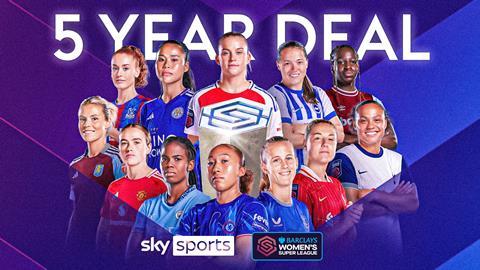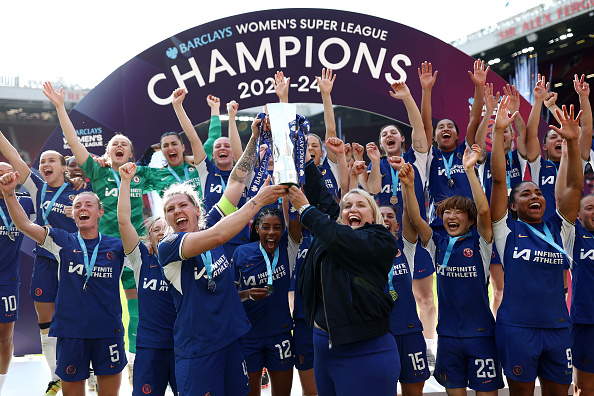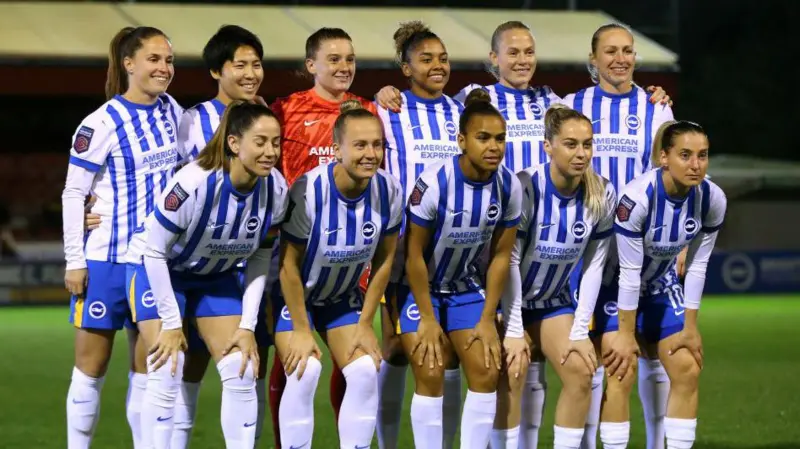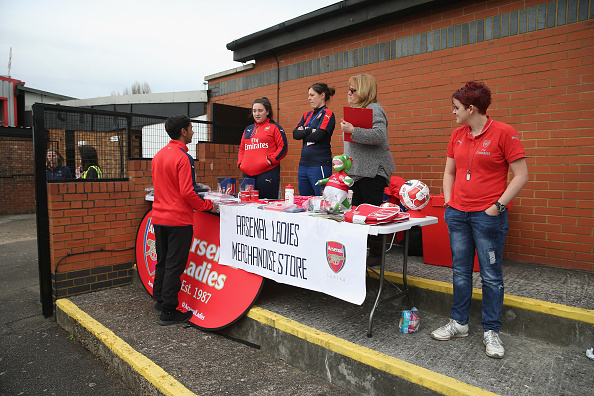A 1,150% surge in revenue in five years. How the Women’s Super League (WSL) became one of the fastest-growing sports on the planet – and why this is just the warm-up.
In 2021, the Women’s Super League (WSL) pulled in a modest £6 million in total revenue. Fast forward to 2025, and that number has rocketed to an estimated £75 million – an eye-popping 1,150% increase in just four years.
It’s the kind of commercial leap few leagues in the world – men’s or women’s – can claim.
Where the Money’s Coming From: The Four Revenue Pillars
1. Broadcast Deal (37%) – £27.8m

The landmark Sky Sports & BBC deal inked in 2021 set the stage, but the 2024–25 renewal is expected to surpass £30 million, with whispers of international rights soon entering the picture. Domestic visibility remains high, and digital distribution is catching up fast.
2. Sponsorship & Commercial Partnerships (35%) – £26.3M

Barclays’ multi-year renewal in 2024 reportedly came with a bigger cheque. Nike, EA Sports, Google, and local club deals are all scaling up. The WSL’s brand appeal – equal parts progressive, professional, and powerful – is pulling in brands that want culture as much as reach.
Notably, club-level sponsorships now account for nearly 60% of the total commercial pot, driven by top clubs like Arsenal, Chelsea, and Manchester United.
3. Matchday Revenue (17%) – £12.75M

Brighton have confirmed plans to build a new women’s purpose built stadium by 2027/28 season
Stadium capacity is up. Ticket demand is up. In 2025, the WSL is expected to break 1.3 million in total attendance, with clubs hosting more matches at main stadiums and experimenting with evening kick off slots to maximise turnout
4. Merch, Digital & Miscellaneous (11%) – £8.15M

From co-branded NFTs to exclusive Spotify team playlists, the WSL is going beyond old-school merch. Social monetisation and digital-first storytelling now drive much of this growing slice – an area with major long-term upside.
Why Now? Cultural Relevance Meets Commercial Readiness
The WSL’s growth is a mirror for shifting culture. Fans want transparency, equality, drama, passion and value for money – and they’re finding it here. The Premier League may still have the glitz, but the WSL has authenticity.
This isn’t just football for women. It’s football rewired – designed for modern fandom, led by values, and still affordable enough to be accessible.
What’s Next? The £100M Milestone Is in Sight
If this pace continues, the WSL will likely pass £100 million in total annual revenue by 2026. Key drivers:
- International broadcast expansion
- Increased club investment
- UEFA calendar integration
Final Whistle: More Than a League – A Movement
The rise of the WSL isn’t just about financials. It’s a signal to the sports world: women’s football isn’t the future – it’s the present. And with £75 million in the books, the rest of the world is finally catching on.







